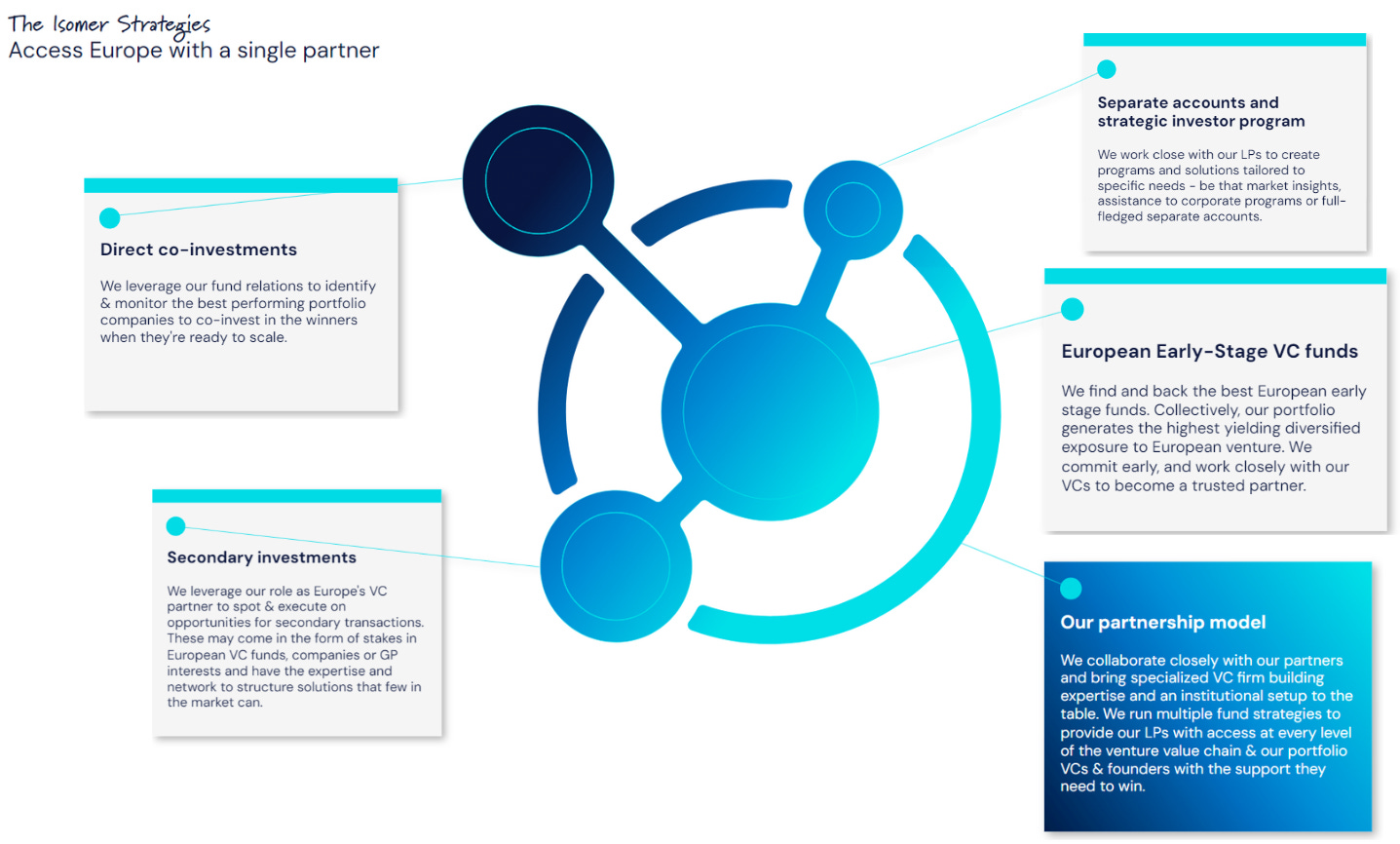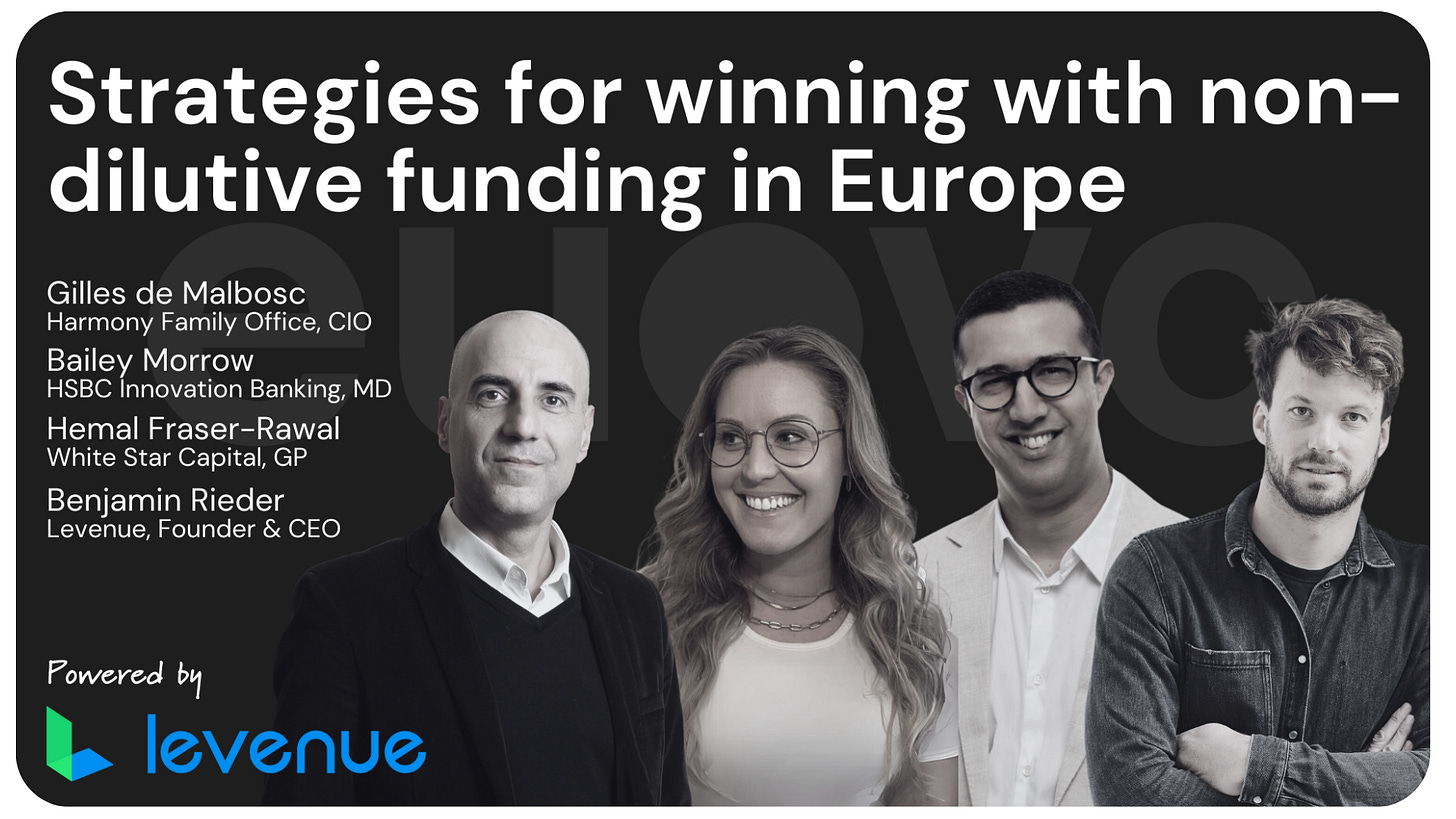If there's any market that's not slowing down, it's the secondaries market. And it’s a buyer’s market. But how do you win? We convened some of Europe's best secondaries investors to discuss the current market and how to build your investment strategy, evaluate opportunities and negotiate deals. Here’s the write up of our key learnings as well as the recording 👀
Expert Secondaries Panelists:
- Joe Schorge, Founding Partner of Isomer Capital
- Kemper Ahl, Vice President of Industry Ventures
- Martijn de Wever, CEO & Founder of Floww
And remember, as always, you can also listen on Spotify or Apple 🎧
Table of Contents
Watch the recorded roundtable 📺
Secondaries 101
The rise of secondaries in Europe
Strategies to Win in the current market
A note on Pricing Secondaries Investments
Why Secondaries Are Often For The Big Boys
Upcoming eu.vc roundtables
This event was brought to you by… London Stock Exchange & Floww In anticipation of the launch of their new funds service.
Floww removes the hassle and costs of managing multiple vendors when setting up or managing private market funds.
The London Stock Exchange, in partnership with Floww, is helping to bridge traditional funding gaps by meeting the capital needs and ambitions of businesses at every stage of their growth journey.
Chapters:
00:00:00 - Welcome to the roundtable and introductions
00:03:02 - Solving Pain Points in the Private Markets
00:11:29 - The Rise of Venture Secondaries
00:14:20 - Creating a Systemic Approach
00:20:07 - The Need for Innovation in the Market
00:23:00 - Liquidity Solutions and the Secondaries Market
00:25:43 - The Evolution of Intermediaries in the Market
00:28:26 - Creative structuring for late-stage investments
00:33:59 - Bridging the Gap in Due Diligence for New Investors
00:39:14 - Tactics for Dealing in Secondary Market
00:41:51 - The Platform Approach to Venture Secondaries
00:44:35 - Timing the Market vs. Timing the Asset
00:47:19 - Negotiating a Secondary Transaction
00:53:00 - Strategies for Buying into Pre-IPO Companies
01:01:13 - Experts needed for private Capital markets
Or Listen on Spotify or Apple 🎧
Secondaries 101
In the backdrop of the Tech Reset and the maturing of the European venture ecosystem, a rare confluence of market conditions is presenting sophisticated investors with an unprecedented opportunity: the burgeoning market of venture secondaries. This nuanced sector, once a niche within private equity, is fast becoming a mainstream force, reshaping how liquidity is realized in the venture capital landscape. But it’s not for the faint of hearted, let’s dive in.
But first, let’s get definitions in place:
Venture secondaries involve the purchase of pre-existing investor commitments in startups or funds rather than direct, primary funding. This mechanism provides an avenue for early investors to exit, offering liquidity in what is typically a long-haul investment.
Europe, having nurtured its venture capital industry through a decade of substantial primary investment, now boasts the largest stock of assets ever recorded in the region—ripe for secondary transactions.
Kemper broke down the secondary market into three primary categories:
Direct secondaries, where one buys shares from an existing investor;
LP interest secondaries, involving the purchase of a limited partner's stake in a venture fund;
GP-led transactions, which is a broader category encompassing customized liquidity solutions crafted with the fund's general partner to meet specific needs, often including continuation funds, strip sales, and fund restructurings. Occasionally, these involve injecting new capital into mature funds to support ongoing businesses, which adds another layer of secondary dynamics.
Beyond these, there's a spectrum of other transaction types like corporate spinouts or collateralized secondary LP interests, applicable to various investment forms. Each deal is unique, reflecting the secondary market's intricate and somewhat deliberately obscure nature.
Benefits for Buyers: Secondaries in private equity are attractive for several reasons. They offer faster deployment in diversified investments, shorter durations, and potential for attractive internal rates of return (IRRs). A key advantage is that general partners (GPs) have usually owned these companies for some time, passing the higher risk discovery stage. This familiarity with the companies reduces risks for secondary buyers (cf. Morgan Stanley for more).
The rise of secondaries in Europe
The history of secondaries in Europe, particularly in the venture capital (VC) space, can be traced back to an environment historically characterized by distressed sales, especially notable during economic downturns like the technology crash of 2000 and the Global Financial Crisis of 2008. Initially, these market conditions led to an increase in secondaries volumes as stakeholders, including banks and insurance companies, sought liquidity amidst economic uncertainty. This was further accelerated by new capital requirements imposed on financial institutions in the aftermath of the Global Financial Crisis.
As the market evolved, the secondaries market became a valuable tool for portfolio management. Limited Partners (LPs) utilized it to lock in realized gains or rebalance fund exposures through early exits, while General Partners (GPs) found it useful for securing additional capital and time to maximize the value of unrealized portfolios. This shift from being driven primarily by market distress to a focus on portfolio management marked a significant change in the role of secondaries in the investment landscape.
The venture capital market, closely tied to the broader private equity (PE) landscape, was similarly influenced by post-2008 macro-economic conditions. One notable trend in the tech sector was that companies stayed private for longer, with the median timeline to Initial Public Offering (IPO) extending significantly. This, combined with an abundance of capital allowing for larger funding rounds, led to a decreased level of exit activity relative to the rate of capital deployment from GPs. The resultant pressure to return capital to LPs, along with liquidity needs of founders, employees, and early-stage investors, has made the VC Secondaries market an increasingly attractive option.
Looking at the current state of the European VC secondaries market in 2023, there has been significant growth in deals for secondhand stakes in startups. This growth is attributed to dwindling liquidity options for investors and employees, as well as a challenging environment for exits. The first half of 2023 saw fewer exits compared to the previous year, increasing the pressure on venture capitalists to distribute capital to their LPs and making secondaries an appealing option for freeing up capital for other investments. The market has also seen an increase in activity from private equity firms looking to access top tech companies, leveraging the secondaries market to achieve target ownership percentages.
Strategies to Win in the current market
In the roundtable, we asked Kemper and Joe to shed light on the possible investment strategies in the secondaries market. They described it as being based on the following key principles:
Flexibility: Be willing to buy exposure to late stage venture assets through a variety of structures, depending on what yields the most attractive pricing, risk profile, and alignment with counterparties. This flexibility allows you to be opportunistic and take advantage of market conditions.
Focus on specific businesses: Be laser focused on specific businesses that you believe have the potential to be successful. This focus allows you to do more in-depth due diligence and build a better understanding of each business.
Leverage a platform: Institutional investors will often have secondaries investments as part of a bigger program which builds a proprietary flow of secondaries opportunities through long-term relationships with their partners, e.g. fellow LPs and GPs they’ve invested in. As an example, Isomer and Industry’s underlying portfolio counts thousands of companies on which they have special access to data as well as insiders.
Diversity of exit pathways: Look for companies that have a variety of potential exit pathways, such as IPO, M&A, or buyout. This diversity reduces their risk if one exit pathway does not materialize.
Be sophisticated about the structures you engage in. As an example, on our roundtable, Kemper shared that he finds senior preferred securities often offer the best risk-reward profile in the current secondaries market. These securities have a higher priority claim on the company's assets and cash flow than common stock, which makes them more attractive to investors.
Here are some specific examples of how one might apply this strategy in the current market:
Buying shares of companies that have raised capital at very high valuations. These companies are likely to need to raise more capital in the future, and that they will be forced to offer more attractive terms to investors. This will often present an opportunity to buy shares at a discount to their intrinsic value.
Buying LP interests in venture capital funds that have invested in companies that are waiting for the IPO window to open. LP interests offer a unique opportunity to gain exposure to high-growth companies at a discounted valuation as many LPs are happy to take money off the table after a long journey with a decent markup to their initial commit, but a discount to what might be possible at a later point in time.
Buying preferred stock from companies that are in the process of being acquired. Such preferred shares often trade at a discount to their intrinsic value because investors are concerned about the outcome of the acquisition and you might be willing to take on this risk in order to buy shares at a discount.
A Note on Pricing Secondaries Investments
In the secondary investments market, the price discovery process is a critical and intricate aspect, navigated by sophisticated investors through a combination of market analysis, company fundamentals, and strategic negotiation. The market dynamics, particularly since the pandemic, have seen a rapid rebound in activity, with tightening bid-ask spreads and increased opportunities to acquire high-quality assets at perceived discounts to intrinsic value. Additionally, the market has shown growing segmentation among buyers and increasing GP influence on transactions.
The valuation process in secondaries is complex, heavily reliant on deep and extensive analysis. As an example, when assessing an LP secondary, the valuation approach will vary among fund managers, with some taking aggressive markdowns, while others retain previous levels in anticipation of recovery, making accessing company-level information crucial for identifying undervalued funds and assets and thus the opportunity at hand.
Valuations of single assets are generally based on the same models in secondaries as in primaries, but these require sanity checks against a peer group of quoted comparators and our panel agreed that establishing precise valuations is more art than science.
The valuation process often hinges on the company's position in its lifecycle, its anticipated exit timeline, and the expected exit valuation as well as a mix of the known tools from PE investing such as factoring in things like the normalized cashflow, capitalization multiples, and of course the premium/discount.
These elements of course are influenced by the asset's intrinsic capacity to generate cash, public market valuations, and cyclicality related to supply and demand dynamics. Information asymmetry and arbitrage opportunities play a significant role, with secondary market transactions typically occurring at a discount to NAV, reflecting vendors' need for immediacy or their exploitation of information advantages.
Consequently, there isn’t a one-size-fits-all rule of thumb due to the complex and varied nature of secondaries, but as Joe mentioned in the roundtable, seeing a path to alignment on pricing is crucial. If it seems like there’s little path to pricing agreement, it can often make sense to consider revisiting the deal in three to six months as that allows for a reassessment based on the company's performance relative to its yearly plan and the state of the broader market.
Why Secondaries Are Often For The Big Boys
Investing in secondary markets presents unique challenges not only for retail investors but also for seasoned professionals. A key difficulty lies in the scarcity of reliable information.
As both Joe and Kemper highlighted, possessing a broader platform significantly leverages the ability to engage effectively in secondaries. Institutional investors have the distinct advantage that they’re not only experts in their field, but they’re also operating out a strong institutional base comprising multiple LP investments creating strong nodes across the sectors and markets of interest. This creates a vast ‘hunting ground' of pre-vetted high quality investment targets that they have comprehensive data sets on via their LP investments. As an example, the speakers shared in our roundtable, that with their thousands of underlying portfolio companies, they often find themselves familiar with potential target companies from multiple funds within their portfolio giving them a significant advantage to any other potential buyers.

Fact of the matter is that often when a retail investor (or anyone else without such privileged access) will have to rely on heavily incomplete data. As an example, when a Limited Partner (LP) wishes to sell a fund interest, they will usually provide fund financials, listing company names, costs, values, and capital account statements. However, these documents often lack detailed information about the businesses themselves and there’ll be little incentive on the seller side to be transparent about the less glamorous facts. In either case, direct conversations with company CEOs and prior investors are often a necessary part of any meaningful transaction.
As a consequence, while the secondaries market is definitely hot right now, it’s not for the casual investor.
At eu.vc we’re keeping a close eye on the market and promise to be bringing more content on secondaries in the coming time - so stay tuned! 👀
Upcoming events
📺 Virtual events we’re hosting
The O.G. Roundtable of the Year | Dec 15, 2023, 12:00 PM - 1:00 PM
Winning with non-dilutive funding in Europe | Dec 11, 2023, 12:00 PM - 1:00 PM
Data-Driven Portfolio Modeling | Jan 17, 2024, 12:00 PM - 1:30 PM
🤝 In-person events we’re attending
Hit us up if you’re going, we’d love to connect!
GoWest | 📆 6 - 8 February | 🌍 Gothenburg, Sweden
Odense Investor Summit | 📆 13 - 15 March | 🌍 Odense, Denmark
SuperVenture | 📆 4 - 6 June | 🌍 Berlin, Germany
Nordic LP Forum & TechBBQ | 📆 September | 🌍 Copenhagen, Denmark
North Star & GITEX Global | 📆 14 - 18 Oct | 🌍 Dubai, UAE
GITEX Europe 2025 | 📆 23 - 25 May 2025 | 🌍 Berlin, Germany
















